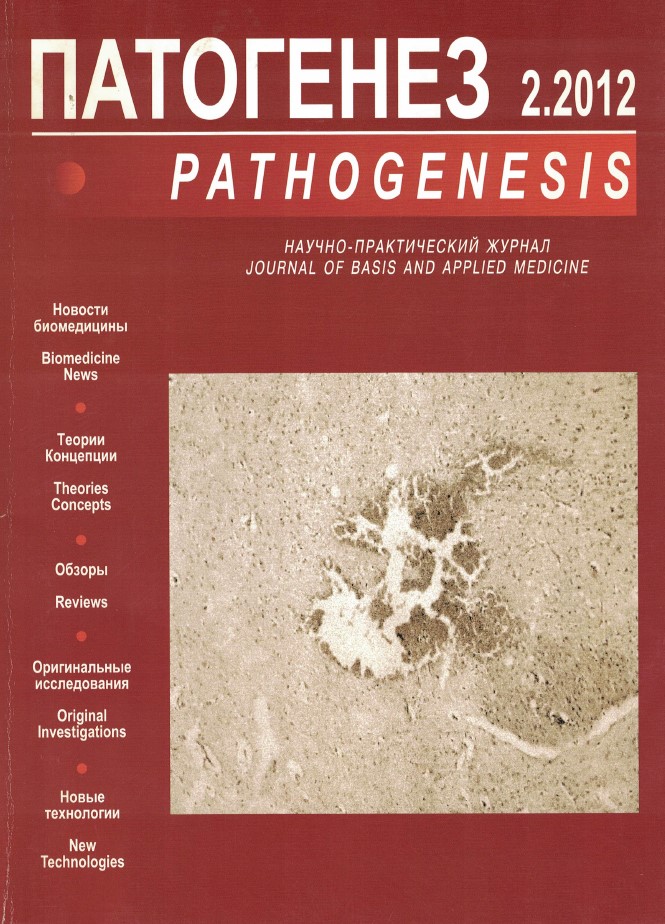The role of nitric oxide in the pathogenesis of myocardial ischemia and diabetes type 1 diabetes in rats of different genetic lines
Abstract
The study of genetic characteristics of the mechanisms that determine the resistance (or vulnerability) to pathogenic factors – the actual problem of pathophysiology. In this context, it seems promising to study the mechanisms of resistance to damaging factors in animals with different patterns of neurohumoral regulation. In this paper we compared the resistance to acute myocardial infarction (AMI) and diabetes mellitus type 1, caused alloxan, in August rats with increased activity of nitric oxide and in Wistar rats. In August rats the intensity of arrhythmias caused by a 10-minute ischemia and subsequent reperfusion, and mortality from AMI were significantly lower than in Wistar rats. Pretreatment with NO-synthase blocker — Na-nitro-L-arginine (L-NNA) increased the mortality from AMI in August rats from 20% to 50%, and in Wistar rats from 40% to about 71%. Alloxan (130 mg/kg, s/c, single dose) caused a hyperglycemia component in Wistar rats and August rats — 27,1±3,7 and 22± 1,1 mmol/l (p <0,03), and during 15 days alter injection of alloxan in the first was 2 times higher than the second (48% vs 26%). L-NNA completely prevented mortality in diabetic August rats, and Wistar rats with diabetes reduced to 13%, while the glucose level decreased to normal in both groups. Diabetes increased the expression of iNOS in the liver of August rats from 1.43 to 4.23 in the ODU (p <0,01), while in Wistar rats from 0.82 to 3.0 in the ODU (p <0,01). L-NNA reduced the content of iNOS to the initial level in both groups. These data suggest that the increased mortality in August, compared with the Wistar is associated with increased activity of NO-system, which speaks in favor of the important role of NO in the pathogenesis of alloxan diabetes. Thus, the inherent increased activity of NO in ischemic injury has a protective effect, whereas in diabetic hyperglycemia, conversely, potentiate the development of pathology.




